Historical Guide to Málaga city, a vibrant city that traces it roots to the Phoenicians who called the place Malaka
By Nick Nutter | Updated 28 Aug 2022 | Málaga | Cities |
Login to add to YOUR Favourites or Read Later
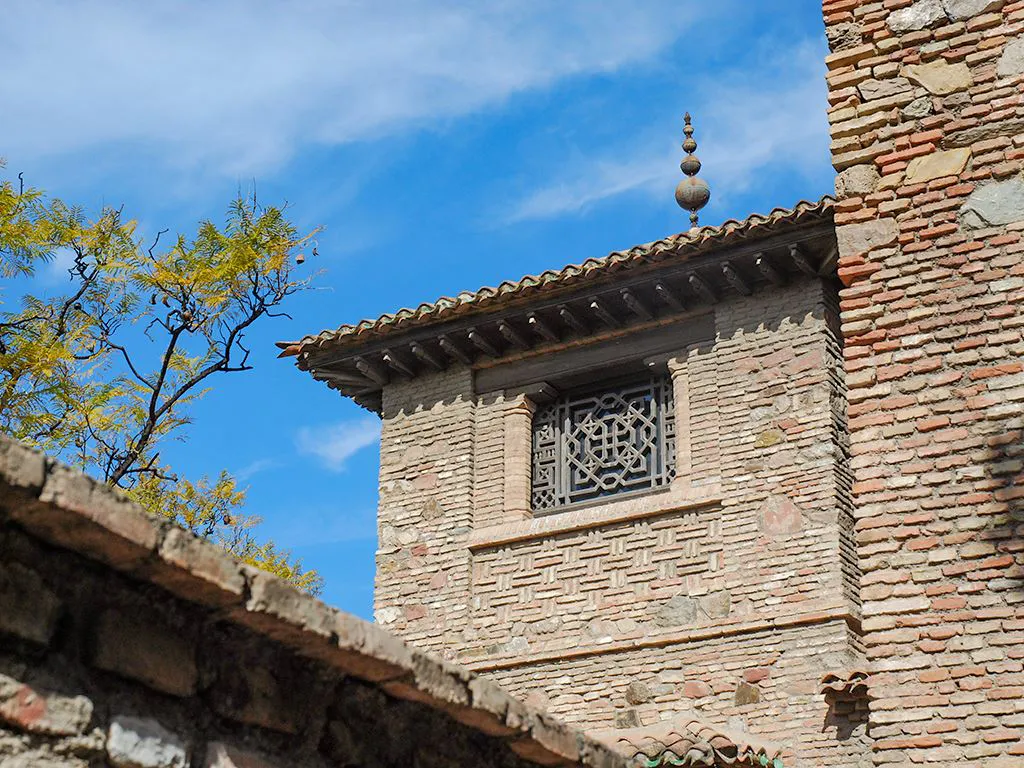

Malaga Alcazabar
The Greek geographer, Strabo, makes the first mention of a Greek settlement called Mainake and positioned it in southeast Spain somewhere around 800 BC. During the period 900 to 500 BC the Greeks and Phoenicians were expanding their trading networks. Both seafaring powers first established trade contacts. The Greeks then integrated with the local populace and Emporia, or trading stations, were built. It was possible for Emporia to grow into fully fledged Greek city states. It is unlikely that Mainake ever achieved full city status but it does have the distinction, according to Strabo, of being the furthest Emporia west from the Greek homelands. There must have been an amount of cooperation between the Greeks and Phoenicians since the latter had many more colonies and both traded with the Tartessians. The history of Mainake is a little blurred, nobody knows exactly where it was, how close to present day Málaga it was, when it was founded or how long it lasted.
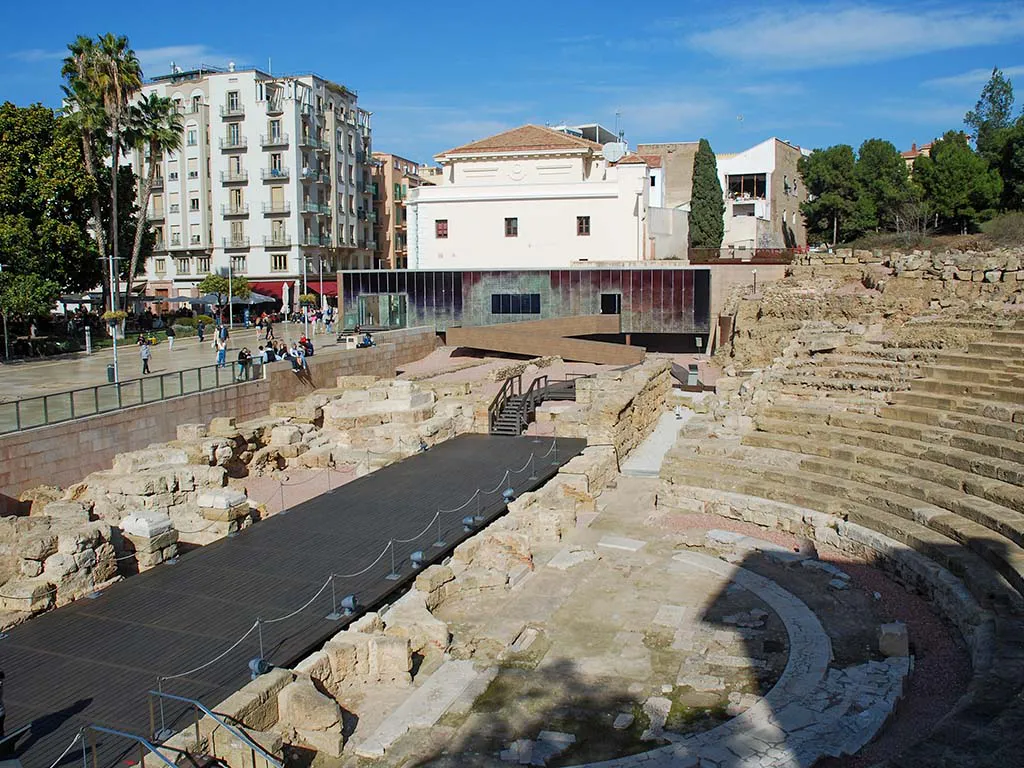
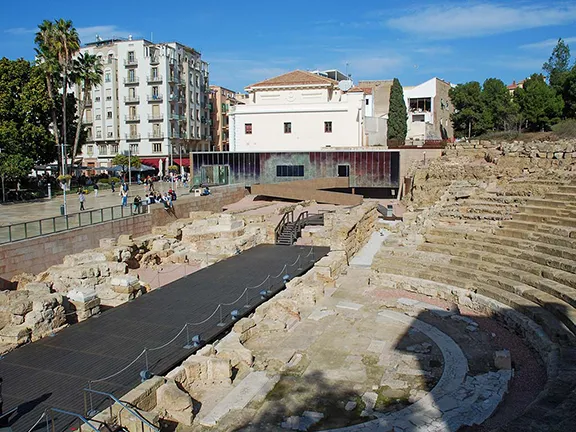
Roman Theatre Malaga City
Notwithstanding the possible presence of a Greek settlement nearby, by 600 BC the Phoenicians had established themselves on the hill on which the Alcazabar now stands. They called their trading centre Malaka. It consisted of a series of terraces on which the buildings stood surrounded by a wall. In those days the shoreline was at the foot of the Alcazabar hill. Part of the foundations of this settlement can be seen in the basement of the present day Picasso Museum.
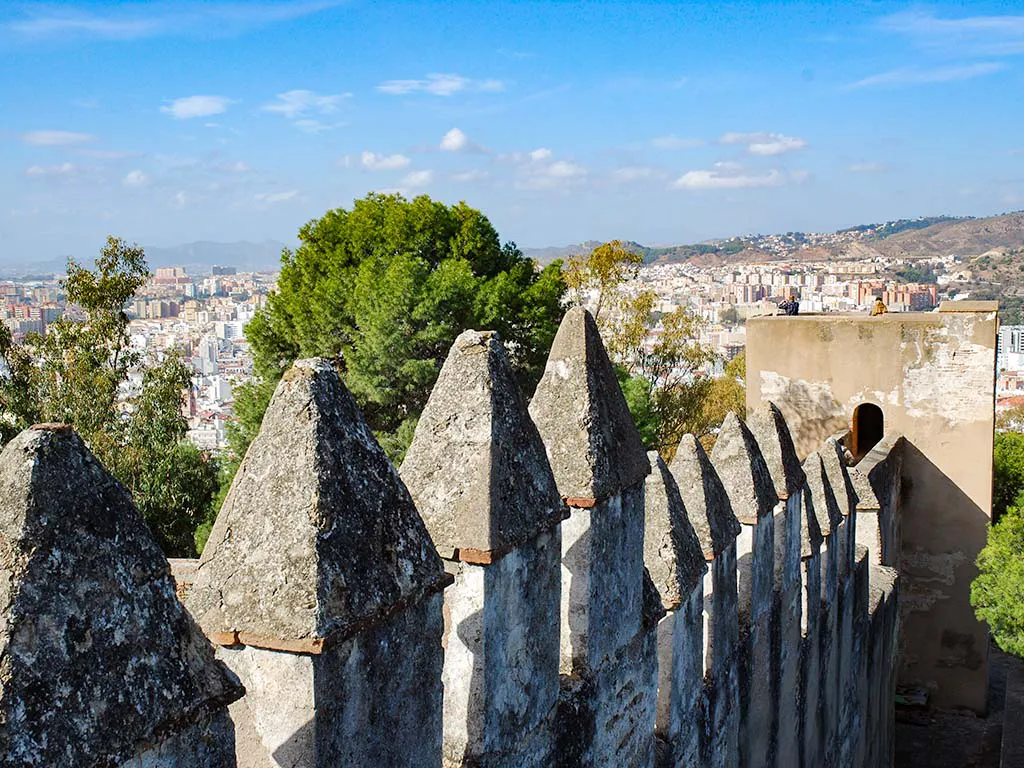

Castle walls Malaga City
The Romans arrived in 205 BC and they extended the town and improved the defenses. In addition to more housing they built a theatre at the foot of the Alcazabar hill. During warm days the whole theatre was shaded by muslin suspended from tall poles erected round the perimeter. The theatre is now open to the public. Nearby is a glass pyramid within which are part of the foundations of a fish salting plant of which both the Phoenicians and Romans had many in this part of the world.
In the 5th Century AD the Romans left Spain. The void left was filled by the Visigoths and, on parts of the south eastern coast, including Malaca, by the Byzantines. The Byzantine Provincia Spaniae was founded in 552 AD. Malaca became one of the most important cities of the province until the Visigoths ejected the Byzantine occupiers in 624 AD. History had moved in a circle. The Byzantine Empire was the eastern Roman Empire that had split from Rome in the 5th Century AD. With its capital at Constantinople the Byzantine Empire had moved clockwise round the Mediterranean taking large tracts of the Middle East, North Africa and into the Iberian Peninsula.
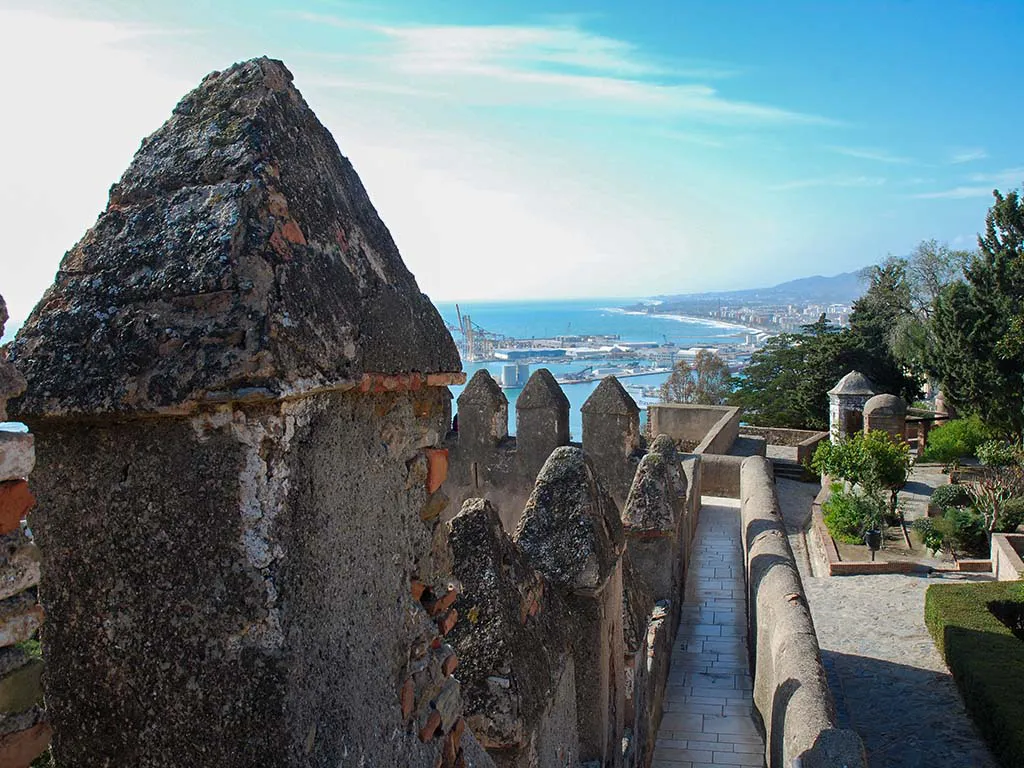
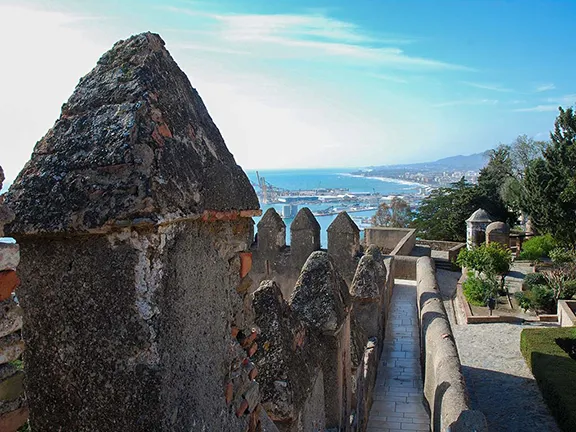
Castle walls Malaga City
The Visigoths remained until 711 AD when the Moors, who had chased the Byzantine armies out of North Africa landed near Algeciras and rapidly took over the bulk of the Iberian peninsula.
It was the Moors who, from 1050 AD, started to build the Alcazabar, not as may be supposed to defend the city from Christian forces but to ward of the Barbary pirates who had a habit of raiding along the coast. The work was ordered by the King of Granada, Badis el Ziri and the finished article rivals the Alhambra at Granada. So fine was the Alcazabar at Málaga that, following its eventual recapture by Christian forces led by Ferdinand II and Queen Isabella of Castile in 1487, the royal couple used it as a residence. Succeeding monarchs to Philip IV in the 17th century spent part of their time in Málaga living at the Alcazabar. The views from the parapets are stunning and its gardens provide a tranquil, shady respite during the hottest part of the day.
High above the city, and the Alcazabar, is the Gibralfaro, a castle that was in use by the military until the 20th century. The name Gibralfaro reflects the original use of the hill, as a lighthouse.
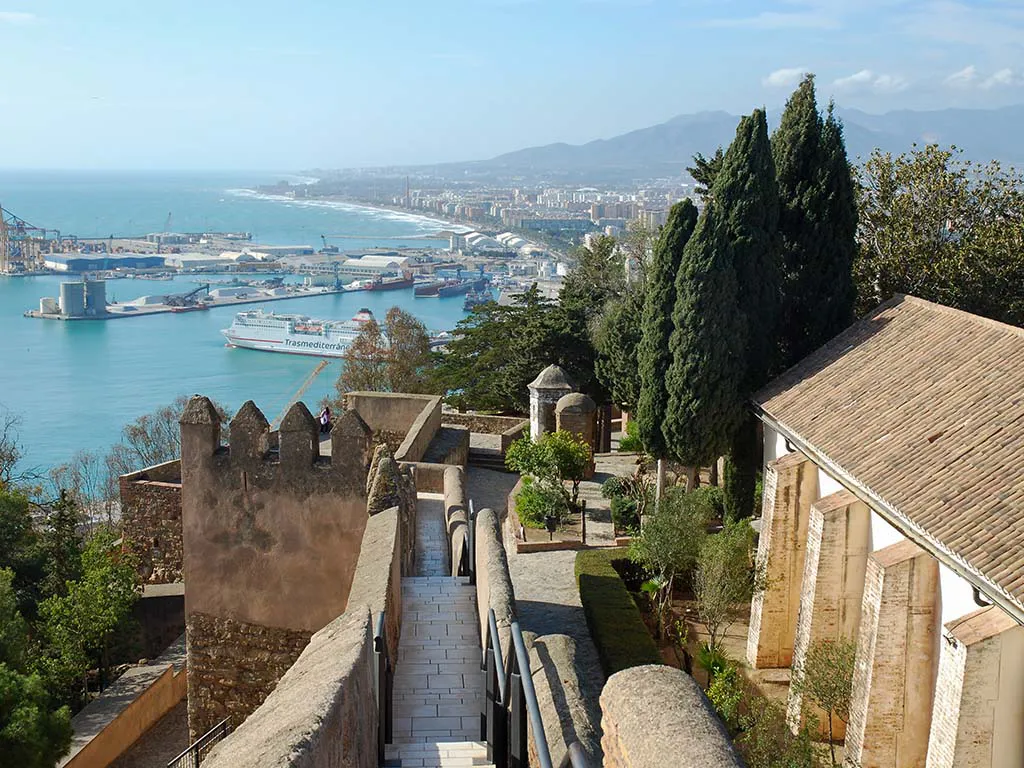

View of Malaga port from Gibralfaro
Under the new Christian monarchs the city gradually expanded with churches and convents being built outside the city walls to encourage the growth of the population until the 16th Century when a series of poor food crops, floods, an earthquake and a number of epidemics contributed to a decline that lasted into the 18th Century. The decline was not helped by a bombardment of Málaga that took place on the 21st July 1665 during the Anglo Spanish War. Five British frigates bombarded the city, severely damaging the cathedral and then landed troops to capture any Spanish arms and ammunition they could find.
In the 19th century Málaga pioneered the Spanish Industrial revolution and became the first industrialised city in Spain. This created economic growth and supported the increasingly influential powerful bourgeois families within the city. The new found prosperity only lasted until the end of that century. The iron works were closed down in 1893, the sugar industry collapsed and the local wine production was damaged by an outbreak of phylloxera blight.
The city’s fortunes did not change in the 20th Century with economic depression, social unrest and political repression making life pretty miserable for most people. The petite bourgeois republicans along with the labour movement consolidated their positions during this turbulent period which was unfortunate for them because in 1937 Málaga was occupied by the nationalists who shot an estimated 17 – 20,000 of them and buried them in mass graves at the cemetery of San Rafael.
Not until the 1960s did Málaga again benefit from a period of growth and, touch wood, it still does. This time prosperity was sparked by an increase in tourism. The results are plain to see.
It is over 2,000 years since the Phoenicians set sail from Málaga. They would undoubtedly be impressed by the modern port and marina surrounded on two sides by restaurants offering an international cuisine and shops with a range of designer labels. The port is becoming a favourite destination for the cruise ships that ply the Mediterranean.
Behind the cathedral is another, older but no less opulent, shopping area with more traditional pavement cafes. In the vicinity of the Picasso Museum you will also find restaurants and tapas bars offering a selection of the local food. This area is a favourite place for the local population, the Malagueños.
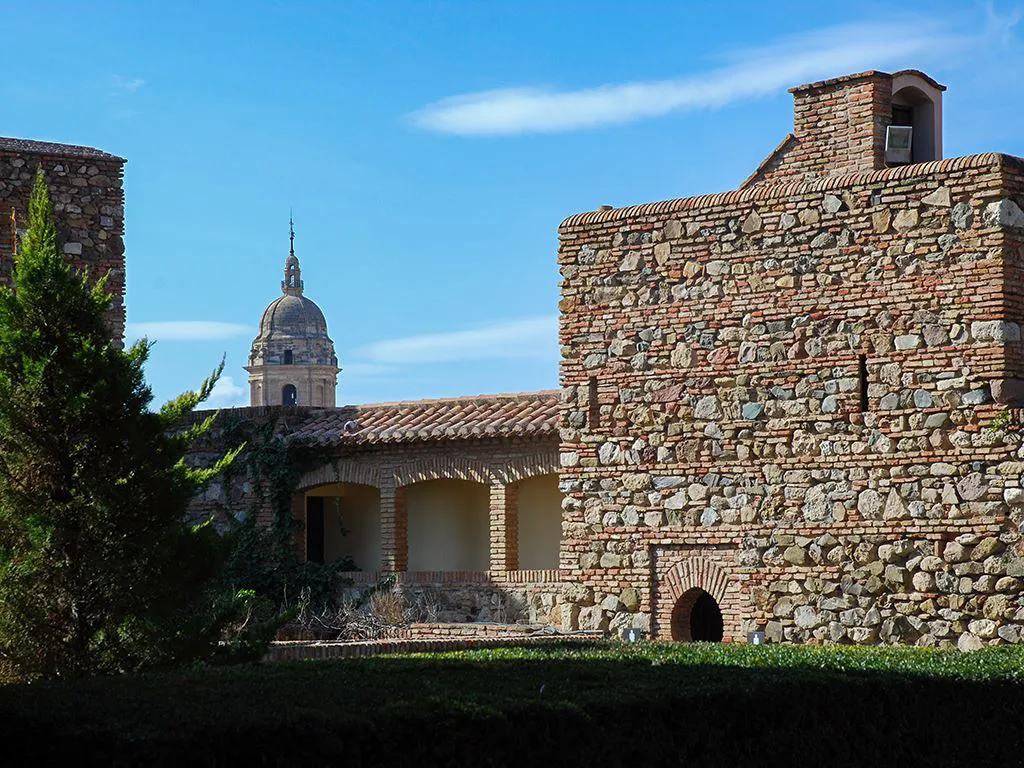
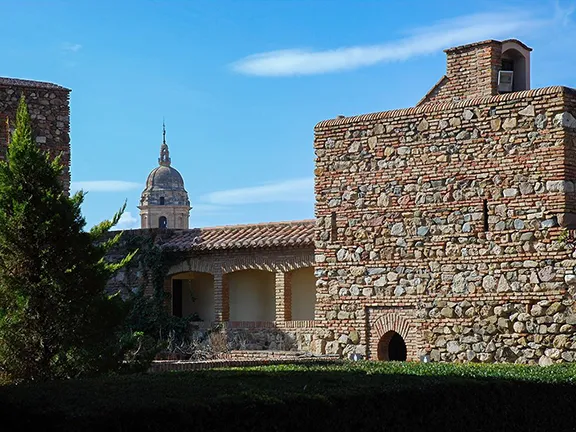
Malaga Cathedral from the Alcazabar